 | ||||||
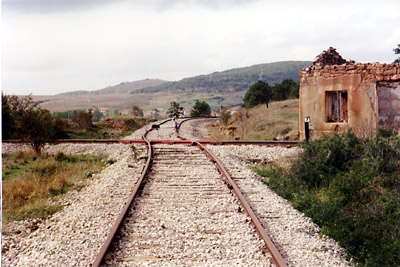
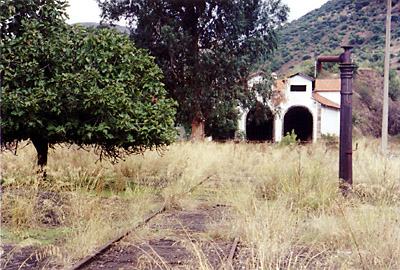
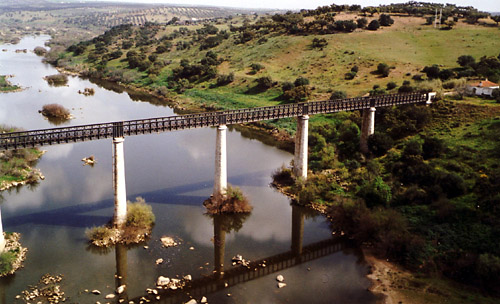
SPAIN and PORTUGAL
A photo essay by Arne Nilsson
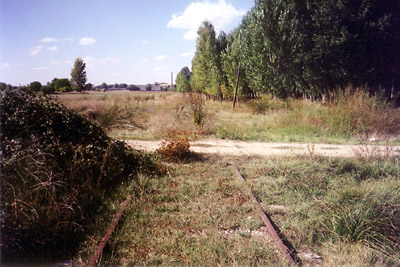
business and, of course, took some leisure. The latter means railbiking, for which Spain and Portugal are great. This was my fifth visit to these two countries, which have wonderful climates, scenery, culture, wine, food, hospitality, an easy going life style and generally low prices (outside of the big cities).
On this trip I wanted to take a look at some potential railbiking opportunities on railroads in western and northern Spain. The weather was good and I set out from Madrid in a rental car and headed for the Iberian Peninsula. The gauge there is 1640 mm, as opposed to 1435 mm for the rest of western Europe, which is the same as standard gauge in the United States.
I found a handful of long, beautiful abandoned lines that, for the most part, were too overgrown to be ridden. I biked several short sections, just to have been on them. I then drove north to check out two potential lines in the mountains. The first one must have been abandoned for twenty years or more, because the track was badly overgrown. Yet old stations, yards and even a big old steam engine were still there. The second line, which goes south and west from Bilbao, turned out to be narrow gauge (1 meter) and was being refurbished. I got the impression that the entire line, about 350 kilometers, was being rebuilt after years of inactivity. This opportunity turned out to be the second time I have inaugurated a new railroad, riding on heavy, freshly laid rails on clean ballast!
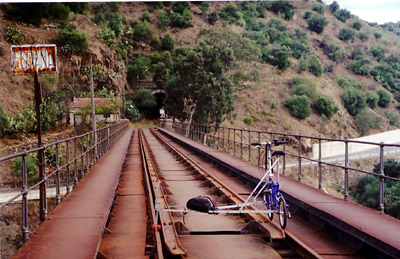
In the beginning of October I visited Spain on
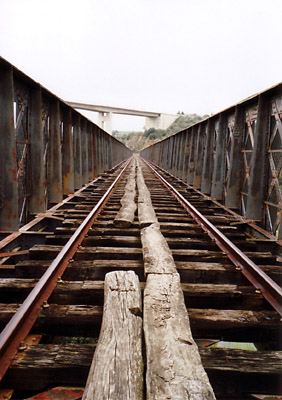
 | ||||||
 | ||||||
 | ||||||
 | ||||
One of the several overgown railroads in Spain. If only someone would clear the brush you could tour the country by railbike for weeks.
Crossing the boarder between Portugal and Spain on the inactive line between Porto and Madrid. The rusty sign (left of railbike) says ESPANA. The Douro River is navigable up to this point. Cruise ships from Porto on the Atlantic come this far in their journey up the river. It's a five day crusie and very beautiful. The captain of one of the ships told me the railroad will be reopened sometime in the future.
This is an interior picture of the bridge seen at
the top of the page. You can tell it's in Portugal
because they do not use guard rails on their bridges!
A railroad quiz: Is this bridge in Spain or Portugal? See photo #4 for the answer.
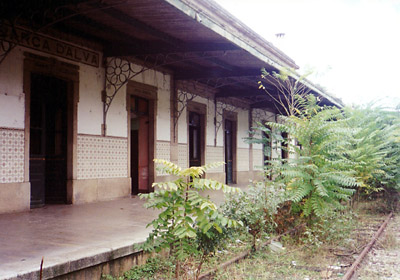
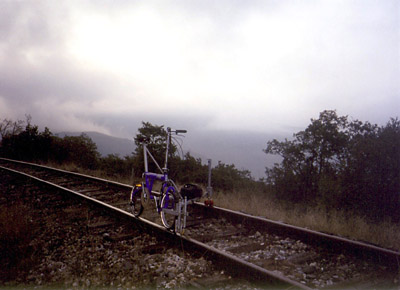
 | ||||||
 | ||||||
 | ||||||
This is the Portugese boarder station at Barca d'Alva.
A large, beautiful building remains completely deserted. Note the iron brackets under the eves. To ride beyond this point a chain saw is recommended.
Here we have a Mediterranean style roundhouse. I was still able to turn the turntable by hand.
Here I am climbing the grade from Douro to the Spanish high plateau. The railroad passes over several bridges and through 22 tunnels (similar to
Camis Prairie).
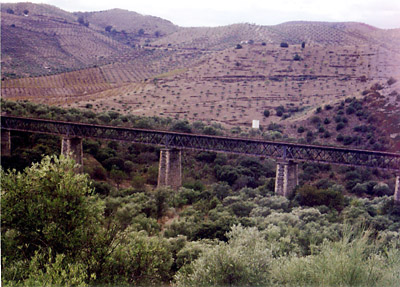
 | ||||||
Dawn on the refurbished narrow gauge. As the morning mist dissolves the sun starts to warm the rails and the railbiker who is invisible behind the camera.
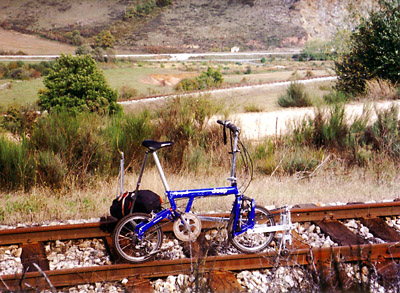
 | ||||||
This line was completed in the 1870s and was primarily used to haul coal. It is part of a large meter gauge rail system in northern Spain and much of it is still in use.
It is approximately 1000 kilometres long. It is said to be an important tourist attraction. Here the line zigazgs down a mountain ridge. You can see it on three levels.
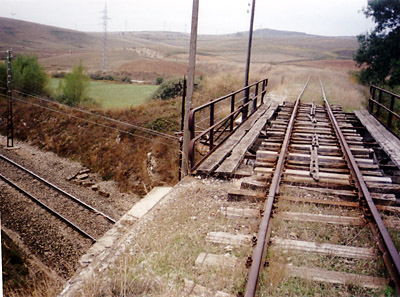
 | ||||||
Another unique experience. The narrow gauge crosses the heavily used broad gauge to Santander. This section of the line has not been restored as you can see.
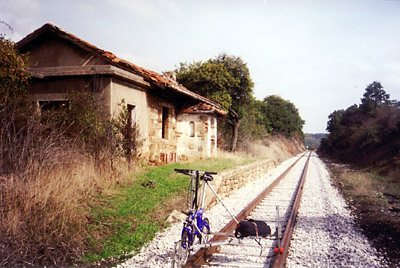
 | ||||
The ruins of a station with a tiny platform. A perfect place for lunch.
The rails and ballast are brand new!
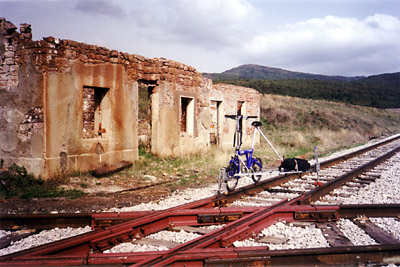
 | ||||||
Farther down the narrow gauge there was a crossover with a broad gauge line, however the latter was inactive. The rail crossover was new and judging by the painted railhead, I was the first to cross it after the track gang left.
Looks like the narrow minded guys goofed the
angle of the crossing and gave their broad minded colleagues a bad s-curve for a suprise.
As you can see I just had to take off on the broad gauge for a while. You don't get to switch gauges every day!
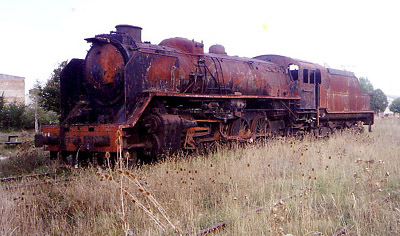
 | ||||
This engine looks like it has been in a fire. It is big by European standards, and I guess it was used to haul coal or ore trains. The track here was too overgrown to ride.
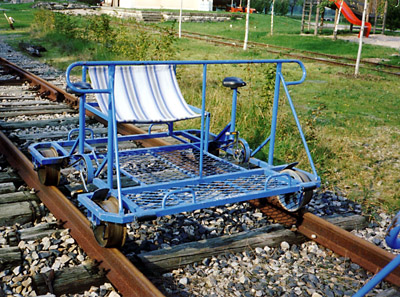
 | ||||
At left, a French railbike design used for
rental in several locations in Spain.
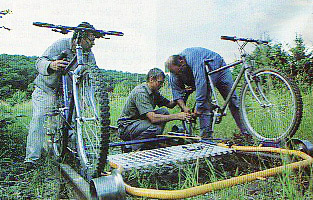
 | ||||
Right, an interesting Spanish railbike design that probably is good on bad tracks.
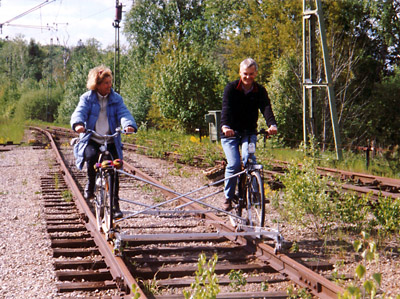
 | ||||
A prototype I built five years ago which was inspired by the Spanish design. It is being redesigned at the moment in my tiny shop. Riding side by side is very nice.
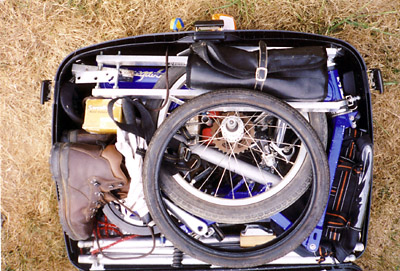
 | ||||
My portable railbike, tools, spares, boots and more, packed in my suitcase and ready to fly home.
 | ||||||